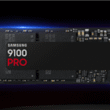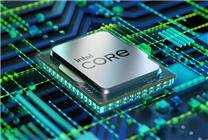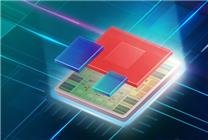Summary
- AMD and Intel Negotiations: AMD is reportedly negotiating for collaboration with Intel, particularly for chip production through Intel’s foundry.
- Market Reaction: The news has positively impacted the stock prices of both companies, reflecting investor optimism regarding potential partnerships.
- Future Outlook: While initial talks focus on low-end chips, AMD is likely to continue utilizing TSMC for its high-end chip production.
On October 3, reports emerged highlighting ongoing discussions between AMD and Intel regarding potential cooperation in chip manufacturing. This development follows the White House’s initial subsidies, which have led to increased scrutiny and activity within the U.S. semiconductor industry. The negotiations hint at AMD possibly leveraging Intel’s foundry services to produce their chips, marking a significant shift in a long-standing rivalry that has spanned over four decades.
Intel has made headlines recently for its talks with several top-tier American tech firms. Notably, NVIDIA has committed a substantial investment of $5 billion, with companies like Apple and Google also rumored to be engaging in similar collaborations. However, the prospect of AMD working with Intel is particularly striking, given their history of competition in both the CPU and GPU markets.
According to recent reports, while discussions are at an early stage, the possibility of AMD utilizing Intel’s foundry services is on the table. This announcement has already had a noticeable impact on the stock market; Intel’s stock surged by as much as 8%, and AMD also experienced a slight uptick, reflecting investor enthusiasm over these potential partnerships.
Despite the excitement, both AMD and Intel have remained relatively quiet. Official responses from the companies regarding these rumors have been minimal, indicating a strategic ambiguity that the market seems to appreciate. Investors are often drawn to such uncertainty, as it leaves room for speculation and future opportunities.
However, the specifics of any collaboration between AMD and Intel remain complex. Historically, these two companies have operated in overlapping markets, directly competing against one another for the lion’s share of the CPU and GPU sectors. Unlike NVIDIA, which has found a collaborative angle with Intel, particularly in licensing GPU core graphics technology, AMD’s cooperation with Intel is less straightforward.
The core issue lies in trust and independence. For AMD to hand over production of its CPU and GPU chips to a direct competitor raises significant concerns about competitive advantage and operational integrity. Any collaboration would need to address whether Intel’s foundry capabilities can match TSMC’s established performance and cost efficiency. Given that U.S. government investments in Intel could potentially impact its manufacturing independence, AMD’s hesitance is understandable.
Current rumors suggest that initial collaborations between the two companies might be limited to low-end chips, while AMD’s high-performance chips would continue to be produced by TSMC. This avenue allows AMD to maintain control over its most critical technology while exploring cooperative opportunities with Intel in less central product lines.
The semiconductor industry is undergoing significant transformation, driven by geopolitical factors and competitive pressures. As companies pivot to adapt, partnerships that once seemed inconceivable are becoming more feasible. Whether this marks the beginning of a new era for AMD and Intel remains to be seen, but the market’s response indicates a willingness to embrace change.
In conclusion, the negotiations between AMD and Intel represent a noteworthy development in the semiconductor landscape, reflecting broader trends and potential shifts in collaboration. While challenges remain regarding trust and competitive positioning, such alliances could reshape the industry’s competitive dynamics. As these discussions evolve, they will continue to be closely monitored by stakeholders eager to understand the implications for both companies and the market at large.








